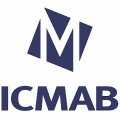U6. Biomaterial Processing and Nanostructuring Unit
-
- Scientific Director: Prof. Nora Ventosa ventosa@icmab.es
- Scientific Coordinator: Dr. Mariana Köber mkober@icmab.es
- Technical Coordinator: José Amable Bernabé jabernabe@icmab.es
- Entities: Instituto de Ciencia de Materiales de Barcelona ICMAB-CSIC
- Address: Campus de UAB, 08193, Bellaterra, Barcelona, Spain
- Phone: +34 935 801 853
- Fax: +34 935 805 729
- Web: ICMAB
Order request
Description
Located at the Instituto de Ciencia de Materiales de Barcelona (ICMAB-CSIC), in Barcelona, and under the coordination of Prof. Nora Ventosa, current director of NANOMOL Group, which is a research group with wide expertise and recognized excellence in the synthesis, processing and study of molecular and polymeric materials with chemical, electronic, magnetic and biomedical properties. It gathers several laboratories, perfectly equipped, to perform the mission of this facility: the development, characterization, and large-scale production of molecular biomaterials of therapeutic or biomedical interest, with controlled micro-, nano- and supramolecular structure. One example of Key-Enabling-Technology (KET) available in this unit is a simple one-step methodology, DELOS-SUSP, based on the use of compressed fluids (CF), such as CO2, to prepare particulate materials with precise and reproducible structural characteristics at micro-, nano- and supramolecular levels (size, shape, internal structural gradients, supramolecular organization and crystalline purity). This example shows one of the singularities of this unit is that counts with CF–based plants at different scales, from mL to L, which allow process development by QbD and process scale-up.
The NANBIOSIS Unit 6 is works under the ISO9001 certification for standard quality control system
Services
FOR THOSE SERVICES IDENTIFIED AS OUTSTANDING, AT LEAST 20% OF THEIR CAPACITY IS OPEN UNDER COMPETITIVE ACCESS. SEE ANNEX 1 OF ACCESS PROTOCOL FOR DETAILS ON % OF OPENNESS FOR EACH SERVICE
U6. Services & Rates
Other projects
| Ref |
Title |
Funding Organism |
Unit Role |
| PI15/00272 |
Design of intelligent nanoconjugates for the treatment of metastatic colorectal cancer. |
Instituto de Salud Carlos III |
Participant |
| H2020-MSCA-ITN-2014-642196 |
Integrated self-assembled SWITCHable systems and materials: towards responsive organic electronics - a multi-site innovative training action i-Switch |
Unión Europea H2020 |
Participant |
| 2014 SGR 17 |
Consolidation Research Group: Molecular Nanociènciai Materials Orgànics (NANOMOL) |
Generalitat de Catalunya |
Participant |
| CTQ2013-40480-R |
Molecular Bio- and Electro-active materials for the improvement of health and social well-being (Be-Well) |
MICINN |
Participant |
| FP7-PEOPLE-2013-ITN nº 607721 |
Nanochemistry of molecular materials for 2-photon functional applications. Nano2Fun |
Unión Europea |
Participant |
| MAT2013-50036-EXP |
Cell Surface Vessel Engineering Using Dynamic Molecular Bioinfecting (DYNAMO) |
MINECO |
Participant |
| RTC-2016-4567-1 |
Nanocapsules containing active ingredients for the topical treatment of dermatological diseases (NANO4DERM) |
MINECO |
Participant |
| RTC-2014-2183-S |
Application of Quatsomes technology for the development of a new range of perfumed softeners with lower environmental impact |
MINECO |
Participant |
| 201260E080 |
Self-assembly, Nanostructuring and Processing of Functional Organic Molecules and their Applications |
Ministerio de Ciencia e Innovación |
Participant |
| MAT2016-80826-R |
Molecular materials and supramolecular organizations for therapy, diagnosis and tissue engineering (MOTHER) |
MINECO |
Participant |
| RTC-2014-2207-1 |
TERARMET: Development of therapies for the treatment of rare congenital metabolic diseases |
MINECO |
Participant |
Publications
2016
- Munoz-Gomez J.L., Monteagudo E., Lloveras V., Parella T., Veciana J., Vidal-Gancedo J.. Optimized polarization build-up times in dissolution DNP-NMR using a benzyl amino derivative of BDPA. RSC Advances. 2016;6(32):27077-27082.
- Cordoba A., Hierro-Oliva M., Pacha-Olivenza M.A., Fernandez-Calderon M.C., Perello J., Isern B. et al. Direct Covalent Grafting of Phytate to Titanium Surfaces through Ti-O-P Bonding Shows Bone Stimulating Surface Properties and Decreased Bacterial Adhesion. ACS Applied Materials and Interfaces. 2016;8(18):11326-11335.
- Cabrera I., Abasolo I., Corchero J.L., Elizondo E., Gil P.R., Moreno E. et al. α-Galactosidase-A Loaded-Nanoliposomes with Enhanced Enzymatic Activity and Intracellular Penetration. Advanced Healthcare Materials. 2016;5(7):829-840.
- Cano-Garrido O., Sanchez-Chardi A., Pares S., Giro I., Tatkiewicz W.I., Ferrer-Miralles N. et al. Functional protein-based nanomaterial produced in microorganisms recognized as safe: A new platform for biotechnology. Acta Biomaterialia. 2016;43:230-239.
News U6
23 Oct
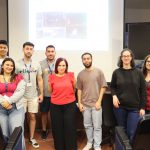
José Amable Bernabé, Technical Coordinator of Unit 6, hosted a course on “Characterization techniques for particulate materials”. Barcelona, october 2024. For yet another year, José Amable Bernabé, of the Soft Materials Service at ICMAB and Technical Coordinator of NANBIOSIS Unit 6, offered this course. The course was an explanation of different techniques to characterize nanoparticles and particulate matter, including the fundamentals of these techniques, sample preparation, practical examples and results interpretation. The course is offered every year through the CSIC training courses offered every year for all its staff, as reported in ICMAB webpage. Soft Materials Service The Soft Materials Service provides[...]
01 Mar
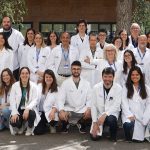
NANBIOSIS researchers pioneer novel treatments for Lysosomal Storage Diseases utilizing extracellular vesicles and liposomes, offering hope to patients. 1 March 2024, Vall d’Hebron Research Institute/ICMAB-CSIC (Barcelona) Lysosomal Storage Diseases (LSDs) encompass a group of rare disorders caused by mutations in lysosomal proteins. These mutations can lead to dysfunctional proteins responsible for breaking down cellular materials, resulting in the accumulation of deposits. Such accumulations can manifest in various neurological symptoms, ranging from progressive neurodegeneration to severe cognitive impairment. Often emerging in childhood, LSDs tragically culminate in premature death for many patients. Currently, up to 14 subtypes of LSDs can be treated[...]
21 Feb
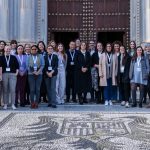
Nearly 40 scientists across 7 countries are pioneering this breakthrough in wound healing using a nobel and affordable bio-inspired, anti-bacterial matrix. In addition to the vast consortium, the project also comprises 5 small and medium-sized enterprises (SMEs) and 9 academic institutions. These were convened last February at the University of Granada to share insights, progress, and strategies. According to an article published by UGR at the beginning of this month, about 40 researchers involved in the project have attended a meeting to share results and progress. The Horizon Europe project NABIHEAL, coordinated by the Biomedical Research Networking Center (CIBER) at[...]
27 Oct
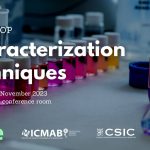
The Service-SOFT/U6 Nanbiosis ICTS (of CIBER-BBN and ICMAB-CSIC) together with the company NANE are organising a technical seminar on materials characterisation equipment. In this seminar, different techniques for the characterisation of particulate materials such as DLS, NTA, Laser Diffraction, Morphology will be discussed. Limited places. You can register at this link Link to the program: here Date: 08th of November Place: Institute of Materials Science of Barcelona (ICMAB) -CSIC – Conference room[...]
12 May

The website for NABIHEAL, an EU-funded Horizon Europe project developing biomaterials for complex wound healing, is now online. The Horizon Europe project NABIHEALi project is coordinated by the Center for Biomedical Research Network (CIBER) at the Institute of Materials Science of Barcelona (ICMAB-CSIC). This project will apply one the “Cutting Edge Biomedical Solutions” of NANBIOSIS for the preparation of different nanoestructures with antimicrobial properties, required for the development of the final multifunctional wound healing biomaterials. This case will gather the expertise of two NANBIOSIS unit: NANBIOSIS U6 will produce and characterize these nanoestructures with antimicrobial properties, which will be tested in NANBIOSIS U16. Find out mor[...]
21 Mar
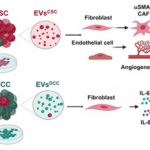
The extracellular vesicles secreted by triple-negative breast cancer stem cells are markers of lung metastasis, according to a study carried out by researchers at CIBER. The work has been carried out by researchers from various CIBER-BBN groups (Bioengineering, Biomaterials and Nanomedicia), and CIBERONC (CIBER area focused on cancer) has participated in it. The research has been led by Joaquín Seras, from the Vall d’Hebron Research Institute (VHIR), a specialist in targeted drug therapies. Physicochemical EVs characterization and all the in vivo studies were performed by NANBIOSISunits of CIBER, specifically NTA analysis was carried out at Unit 6 of Biomaterial Processing[...]
20 Mar
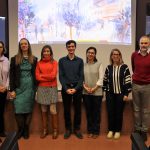
Doctor Marc Martínez from the Nanomol-Bio group – NANBIOSIS U6 from CIBER-BBN at ICMAB-CSIC, defended his PhD thesis “Nanoparticles to modulate topography and ligand distribution at the nanoscale: impact on cell behavior” on 9 March 2023 at ICMAB. he PhD thesis was supervised by Imma Ratera, Judith Guasch and Nora Ventosa from the Nanomol-Bio group at ICMAB-CSIC. Ana Paula Candiota Silveira, Scientific Coordinator of NANBIOSIS U25 was part of the Committee that evaluated the Thesis tooghether with Jesús Martínez de la Fuente, Instituto de Nanociencia y Materiales de Aragón (INMA-CSIC) (President), and Anna Lagunas Targarona, Institut de Bioenginyeria de Catalunya (IBEC) (Vocal). As[...]
02 Feb
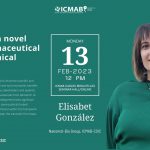
Prof Nora Ventosa, Scientific Director of NANBIOSIS U6 “Biomaterial Processing and Nanostructuring Unit” from CIBER-BBN and ICMAB-CSIC) is hosting the Lecture on nano-pharmaceuticals: “Advancing a novel nano-pharmaceutical towards clinical translation” by Elisabet González, from Nanomol-Bio Group of ICMAB-CSIC and CIBER-BBN Monday, 13 February 202312 PM – 15 PMICMAB – Sala d’Actes Carles Miravitlles and ONLINE Registration and futher information Abstract: Nano-pharmaceuticals have the potential to drive the scientific and technological uplift, offering great clinical and socio-economic benefits to the society in general, industry and key stakeholders and patients. However, the translation of nano-pharmaceuticals from lab bench to an advanced stage of[...]
![]()

